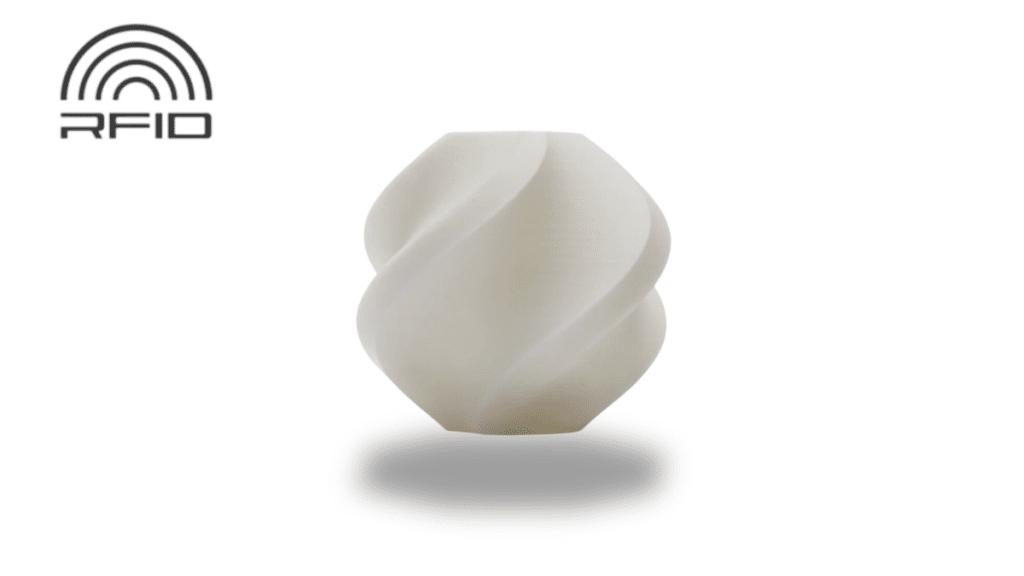When choosing materials for your next 3D printing project, the options can feel overwhelming. With various filaments available, from PLA and ABS to more exotic choices like PETG and TPU, it’s easy to get lost in the possibilities. But how do you know if a 3D printer filament best fits what you’re creating?
What are 3D Printer Filaments?
3D printer filaments are the materials fed into the printer to create solid objects. They come in various types, such as PLA, ABS, and PETG, catering to different project needs. I once used PLA for a toy project because it was biodegradable and easy to print.
Bambu Lab Filaments and AMS Compatibility
Bambu Lab offers a collection of 3D printer filaments that work seamlessly with their Automatic Material System (AMS). This setup makes switching materials a breeze during a print session, perfect for multi-material projects.
Benefits of Using Bambu Lab Filaments
- Seamless Compatibility: With the Automatic Material System, switching materials becomes hassle-free.
- Quality Consistency: Expect smooth finishes across different filament types, such as PLA or PETG.
- Versatility: Options include heat-resistant ABS and other specialty 3D printer filaments catering to various needs.
Types of 3D Printer Filaments
Finding the right 3D printer filament for a project isn’t just about choice—it’s about understanding what each material offers. Here’s what I’ve learned about some popular options.
PLA (Polylactic Acid)
PLA is popular for beginners due to its ease of use. It prints smoothly at low temperatures and offers a variety of colors. I’ve printed many toys using PLA, and its biodegradable nature makes it eco-friendly. It could be better for high-stress applications but delivers great results for decorative or low-impact items.
ABS (Acrylonitrile Butadiene Styrene)
ABS is known for its strength and durability. It’s great for functional parts requiring heat resistance, like automotive components. However, using ABS requires ventilation due to its emission of fumes while printing. Mastering its use takes practice but offers a rewarding experience in building stronger prints.
PETG (Polyethylene Terephthalate Glycol)
PETG combines durability with flexibility and works well for parts needing impact resistance. It’s easier to print than ABS and doesn’t release significant fumes. PETG’s hydrophobic nature makes it suitable for outdoor applications, like garden tools or protective cases.
TPU (Thermoplastic Polyurethane)
TPU is the go-to filament for flexible prints, like phone cases or stress-relief toys. Since handling flexibility can be tricky, it requires patience and correct printer settings. I’ve crafted a few gadget accessories with TPU, appreciating its resilience and elasticity, which add fun to functional designs.
Nylon
Nylon offers exceptional strength and resistance to wear, making it suitable for mechanical parts like gears. Due to moisture absorption, printing with nylon requires higher temperatures and controlled environments. Though challenging, using nylon in projects demands precision but rewards with functional and sturdy components.
Specialty Filaments
Beyond regular options, specialty filaments open creative avenues. Materials like carbon fiber and wood-fill enrich prints with unique textures and properties. These filaments require specific settings and techniques, and I’ve experimented with blending carbon fiber into a camera mount for extra strength and aesthetics. Specialty options inspire innovation and customization in 3D printing.
Factors to Consider When Choosing Filament
Picking the right filament for your 3D printing project can make or break your creation. Consider these factors to choose the best option for your needs.
Compatibility with Printer
First, your printer might have specific requirements for filament types. I once picked a filament without checking, and it jammed my printer. Many 3D printers, like the ones from Bambu Lab, specify compatible filaments, so always check the manual. Sticking to recommended filament types, such as PLA or ABS, ensures smoother printing.
Project Requirements
Each project calls for different filament properties. Build strong parts with ABS for durability and heat resistance. For more flexible needs, TPU works wonders. When I printed a model car, PLA was perfect for its smooth finish. Here’s a quick guide:
- PLA: Smooth, biodegradable, easy printing
- ABS: Heat-resistant, strong, requires ventilation
- PETG: Durable, outdoor-friendly
- TPU: Flexible, careful handling needed
Environmental Impact
Considering the environmental effects is crucial. PLA boasts eco-friendly credentials due to its biodegradability, making it a top choice if sustainability matters. Other filaments like ABS and PETG are petroleum-based, which might not fit eco-conscious goals. Those interested in reducing waste should opt for recycled or biodegradable 3D printer filaments. Choosing wisely helps keep the planet in mind while crafting.
Conclusion
Choosing the right 3D printer filament can greatly impact your project’s success. I once printed a custom phone holder using TPU for its flexibility, and the result was impressive. Consider your project’s requirements, the filament’s properties, and environmental impact. PLA offers ease and eco-friendliness, ABS gives strength and heat resistance, while PETG and TPU cater to durability and flexibility needs. Each filament’s attributes can align with specific project goals. Balancing these factors helps make a well-informed choice for the best outcomes.
